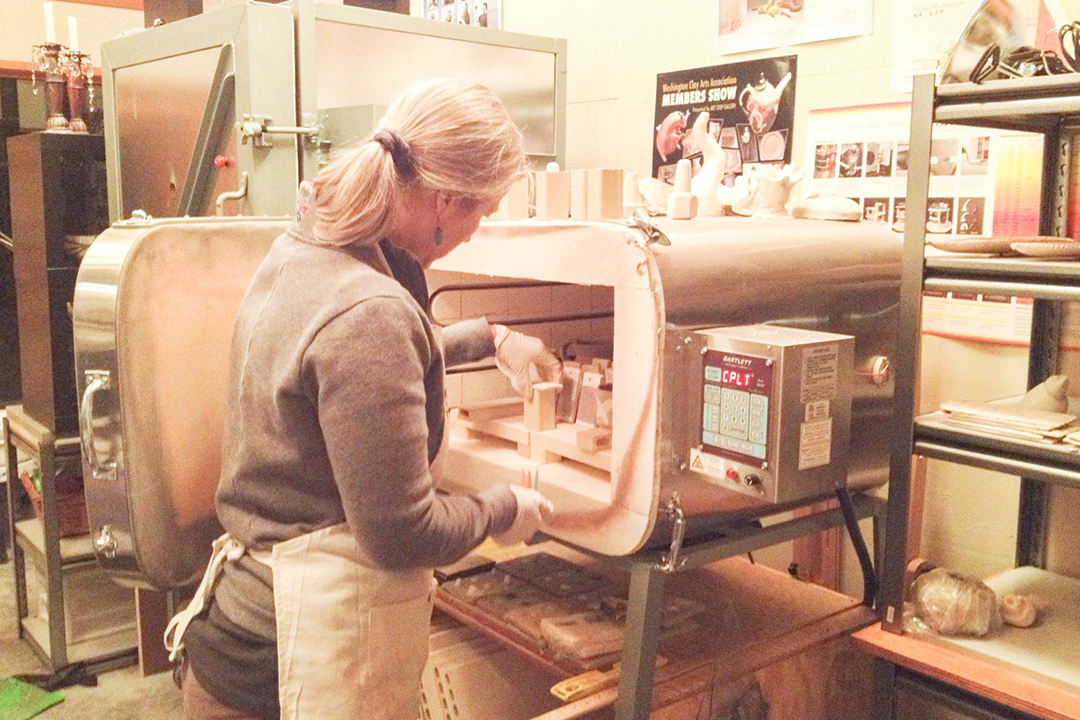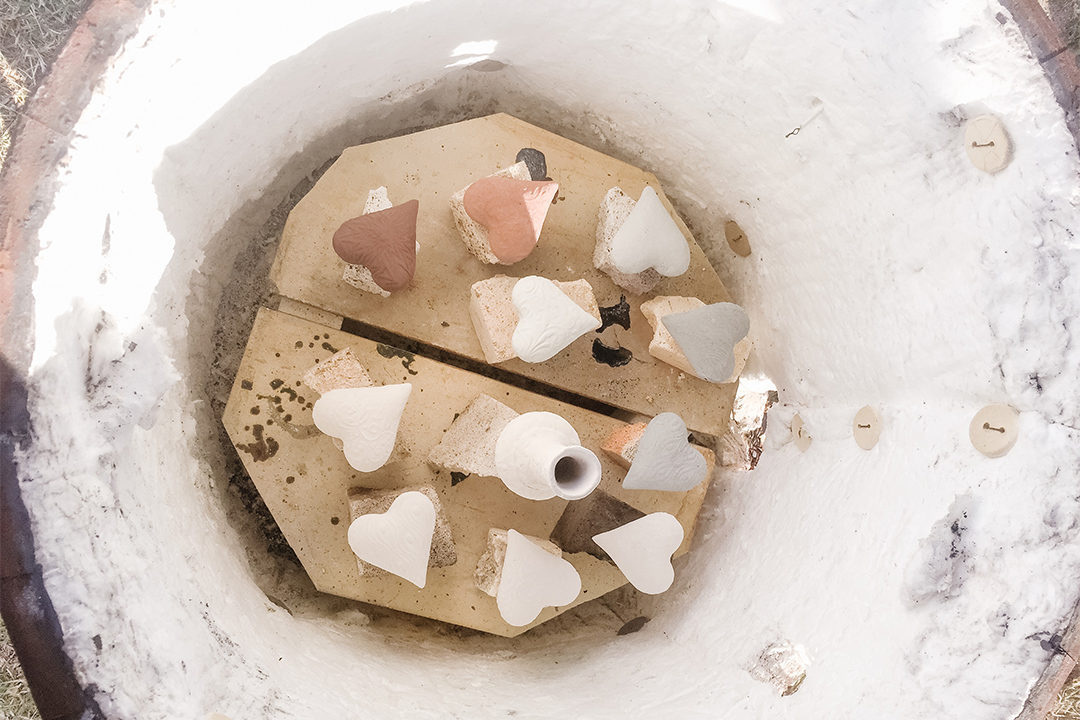
The Process
Beauty is in the eye of the beholder & beauty is all around us.
Electric Firing
This is the most common method to fire in and it is easily assessable to most people. First the clay is bisque fired in an electric kiln. Glaze is then applied to the bisque ware and then glaze fired once more in an electric kiln.

Pit Firing
Pots are typically covered in a specialized slip called a “terra sigillata” and then burnished until they are very shiny. The lightly bisque fired piece are then wrapped in mineral rich materials from banana peels to copper carbonate. The pots are placed in a pit dug outside and gently covered with combustibles including more of the mineral rich materials the pots were wrapped with. The pots are often wrapped with tin foil to hold the materials to the pots while being fired. The pit is lite and left to burn long and slow. The resulting pots are now beautifully coloured and meant to be decorative, not functional.

Raku
After forming raw clay it is bisque fired in an electric kiln and then glazed. The glazed pot is then fired in an outdoor gas fired kiln. When the pot reaches about 1850 degrees F it is taken while molten hot and placed in an airtight metal bin containing combustible material and sealed tight. The combustable materials ignite on contact and the bin is sealed tight at that point. It is this reduction environment (no oxygen) that creates the unique patinas that raku artists strive for.
Salt/Soda Firing
Pieces are bisque fired and then specific colourants are applied to the bisque ware and the pots are fired outside in a gas fired kiln. At about 2012 degrees F salt or soda is added into the kiln and as it vaporizes the salt or soda covers and “glazes” the piece. The typical finish in a salt or soda fired kiln is often referred to as an “orange peel” finish.

Wood Firing
This takes bisque fired pieces into specially designed outdoor kilns that are fired using wood. The wood is burned in large quantities and before the kiln reaches temperature the wood ash fuses to the pots forming the glaze that forms the wood fired patina. This patina replaces traditionally applied glazes.


